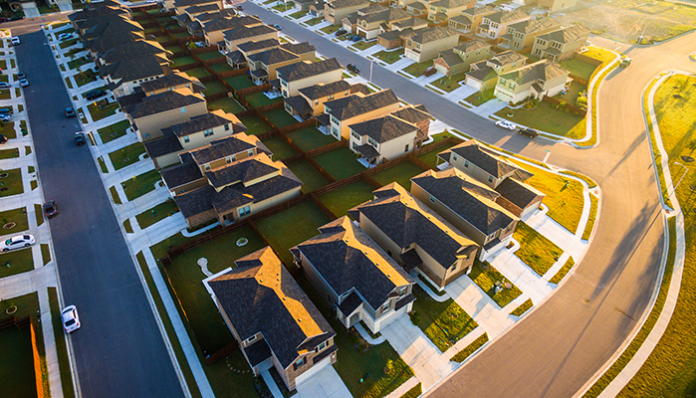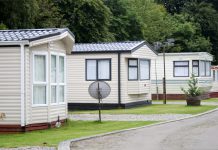
Manufactured housing currently makes up 9 percent of single-family new home starts — a figure that has steadily declined since its peak of 25 percent in 1996, according to U.S. Census data. While several factors are driving that downtrend trend, a portion is related to zoning regulations at the state, local, and even homeowners’ association (HOA) levels which affect the location and number of homes that can be built.
If manufactured homes were more widely accepted, they could play a role in chipping away at the 3.8 million-unit housing deficit, shrinking the affordability gap and promoting a more equitable housing landscape. A more inclusive approach could make that happen.
Overcoming Misconceptions — and Promoting Benefits — of Manufactured Homes
Compelling Features of Factory-built Homes Make Them a Smart Option for Many Homebuyers:
- These dwellings are attractive, energy-efficient, safe, and able to stand up to natural events including inclement weather and fire, as they must comply with the U.S. Department of Housing and Urban Development.
- Manufactured homes provide an average cost savings of up to 50 percent compared to their stick-built counterparts, up to $55 per square foot excluding land versus $114.
- Construction is precise and efficient thanks to technology and large-scale, factory-based work, and onsite work is less disruptive to the neighborhood as it’s shorter than for stick-built homes.
- They are environmentally friendly, as minimal waste remains after construction of a manufactured home.
- Mortgages on manufactured homes perform nearly as well as those on site-built homes, and both categories appreciate at about the same rate.
However, zoning restrictions enacted by many state and local jurisdictions and rules applied by some HOAs discourage the purchase and placement of manufactured homes.
Manufactured homes are often restricted to designated parts of town, subject to stringent regulations including those tied to the age of the house, or banned outright
Standards related to design and building materials make manufactured homes ineligible in certain neighborhoods, while lot-size minimums and parking-space requirements drive up land prices.
Administrative processes and fees also increase cost, risk, and time to market. Moreover, persistent misconceptions about manufactured homes being unsafe, unattractive, a bad investment, and driving down surrounding property values, coupled with negative assumptions about their residents, have kept this category on the fringe in many markets.
Government Support, Industry InitiativesContinue to Move the Needle
HUD has long been a governmental champion of safe, affordable, and well-built manufactured homes. In 2019, the agency hosted the Innovative Housing Showcase, constructing and placing factory-built homes on the National Mall to highlight their features and amenities. States including Arizona, Arkansas, California, Kentucky, New York, and Washington are engaging in proactive approaches to promote their acceptance by relaxing or removing restrictions and encouraging inclusion. Since 1980, Oakland, Calif., has permitted manufactured homes on a permanent foundation in all residential areas. Washington state requires that manufactured homes titled as real property be treated the same as site-built structures.
Incorporating steps like these elsewhere could open the doors to homeownership for more U.S. households. The industry can play an important role in dispelling myths about manufactured homes and promoting their wider adoption, helping move the category forward, by:
- Holding regionally focused events where manufacturers and those in the lending ecosystem convene to learn more about design aesthetics and how factory-built homes can fit into local communities, using successful examples from other areas.
- Rethinking the way manufactured homes are sold. Placing them in developments versus on retail lots showcases how they organically fit alongside other homes and neighborhood features.
- Educating appraisers on best practices when developing the appraisal of a manufactured home.
- Encouraging manufacturers to design exterior elements, including roof pitches, garages, porches, and trim, that are as aesthetically pleasing as interior ones. Selecting a low profile or ground-set foundation allows the structure to more closely resemble a site-built home than a pier and beam foundation, widening the appeal to more potential customers.
Freddie Mac has been working to support manufactured housing through Duty to Serve, including growing the volume of manufactured home loan purchases 85 percent between 2018 and 2020, and expanding the types and uses of manufactured homes eligible for financing.
Access the research paper by doing a web search for “Freddie Mac manufactured housing zoning research”.
These and other initiatives are helping to transform the industry and highlight manufactured housing for what it truly is — an affordable and attractive choice for a large swath of homebuyers.
Dennis Smith is an affordable lending manager in the Single-Family Client and Community Engagement division. He manages the affordable housing preservation and manufactured housing initiatives that support Freddie Mac’s underserved markets plan.










